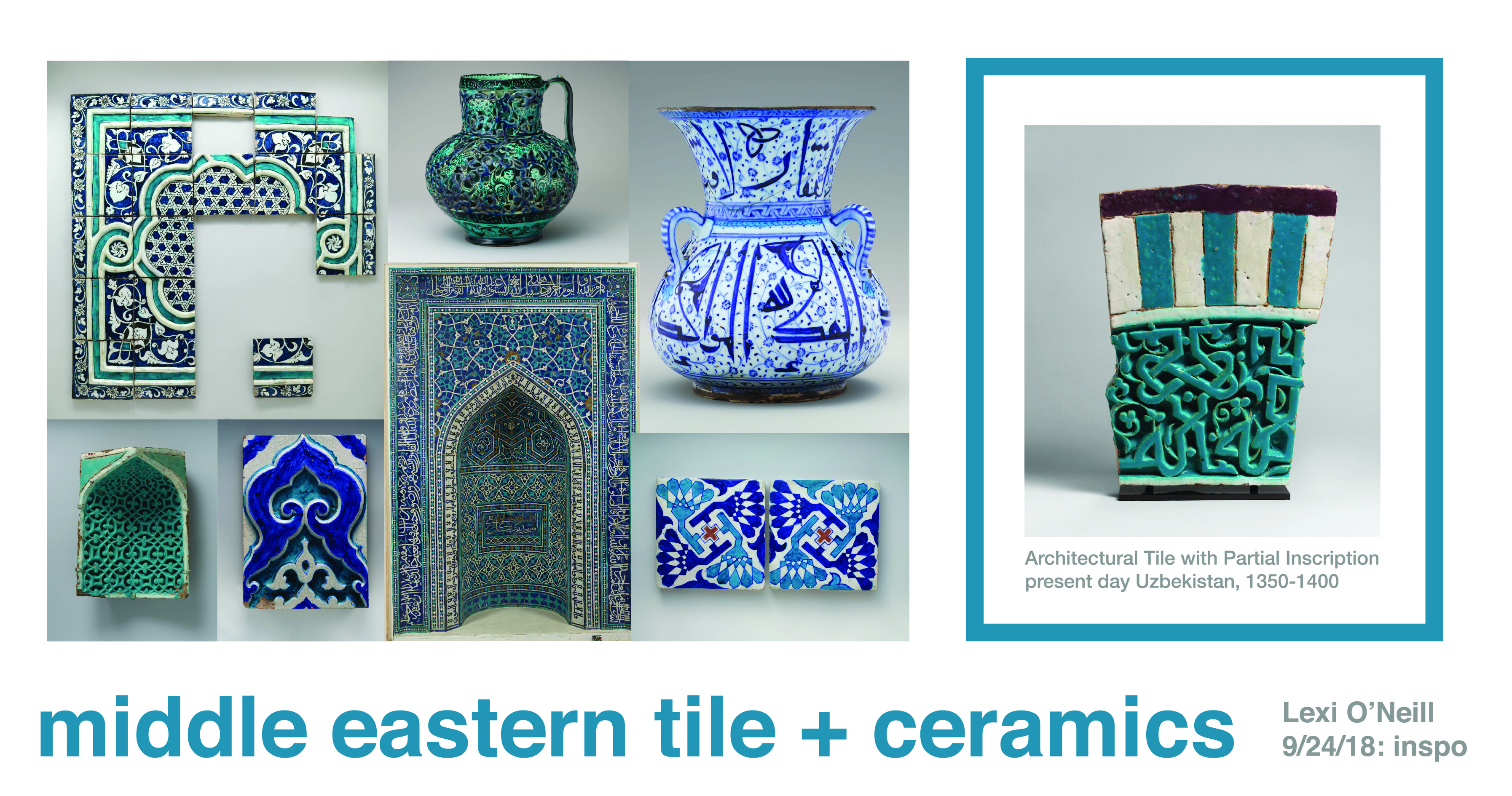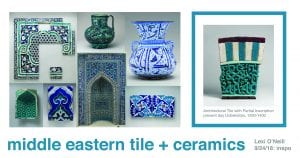For this case study, I wanted to focus on 14th century Islamic/middle-eastern ceramics and tile work- both a region and medium that sparked my interest in how it developed and its origin. The piece I chose, “Architectural Tile with Partial Inscription” is a large (14” x 11” x 3”) stone piece once belonging above a window. The work was believed to be a component of an arch-shaped decoration, the bottom is inscribed with “Sovereignty is for God” in Kufic (Metropolitan Museum of Art 2006). The piece holds several components of its time period that trigger my curiosities- its complex yet ordered pattern, jade coloring, and its purpose. The architectural tile dates back to present-day Uzbekistan in 1350, at the time under rule by the Mongols. Commanded by Genghis Khan, his army ruled from the 13th to 15th centuries, merging artistic influences from other areas of the Persian empire (Islamic Central Asia n.d.). In turn, most works from this period contained similar motifs and styles- including plant/natural motifs, similar glazing techniques and the eight (or six) pointed star.
The tesselations seen in this piece and many others hold techniques dated back to the sixth and seventh centuries in pre-Islamic times. In the Byzantine and Sasanian empires, craftsmen would replicate their designs on a larger scale, covering mosques or doorways from a single pairing of shapes (Metropolitan Museum of Art 2006). A key characteristic in why this stuck was the adaptation of the Islamic religion, as the eight-pointed star, also known as the “rub el hizb”, its main purpose to serve as a reminder of the Qur’an, a sacred book to the Islamic religion. The common use of monochrome blues and greens is accredited to Central Asians, as they utilized a 3-hued style of painting to the works, and thus with the Mongols ruling the empire, was adapted and translated in various areas to different tones- including those of present-day Uzbekistan (Islamic Central Asia n.d.).
Text Citations:
https://www.metmuseum.org/art/collection/search/446648.
http://www.iranicaonline.org/articles/art-in-iran-viii-islamic-central-asia
Image Citations:
Ceramic Vessel: https://www.metmuseum.org/art/collection/search/451492
Tile Panel, 1430 Syria: https://www.metmuseum.org/art/collection/search/456948
Tile 1400 Pakistan: https://www.metmuseum.org/art/collection/search/456930
Pierced Jug with Harpies and Sphinxes: https://www.metmuseum.org/art/collection/search/448671
Mihrab (prayer niche): https://www.metmuseum.org/art/collection/search/449537
Tile from a squinch: https://www.metmuseum.org/art/collection/search/447256?searchField=All&sortBy=relevance&what=Tile&od=on&ft=islam&offset=0&rpp=80&pos=8

